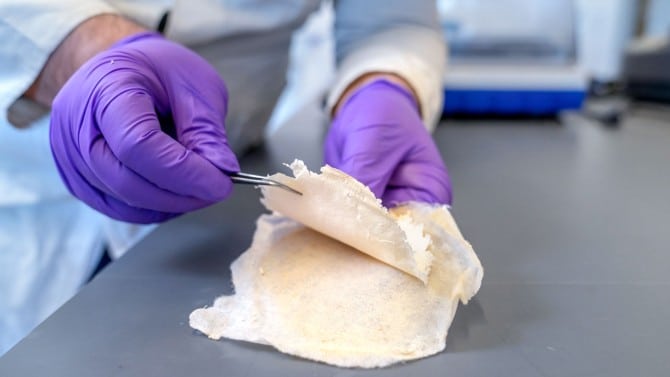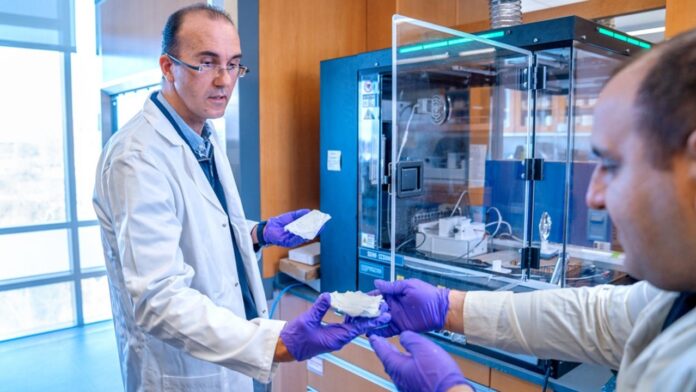Cornell researchers from Cornel University discovered a new method to use a natural compound called lawsone to make cotton bandages more effective against infections and speed up wound healing. They coated cotton with nanofibers containing lawsone, which has antioxidant and antibacterial properties. This approach could be crucial in fighting drug-resistant bacteria. While cotton is a popular bandage choice because it’s cheap, comfortable, and safe for the body, it doesn’t help wounds heal or prevent infections.
Lead author Mohsen Alishahi, a doctoral student in fiber science who works in the NanoFibers and NanoTextiles (NanoFibTex) Laboratory in the College of Human Ecology’s Department of Human Centered Design (HCD), said, “Cotton alone cannot provide an answer for these complications – it needs to be biofunctionalized.”
Tamer Uyar, an associate professor and the lab’s director, focuses on making valuable fibers from eco-friendly materials. They study how these fibers can be used in medical textiles and delivering drugs. In their recent project, they worked with Lawsone, a compound from henna leaves. Lawsone has qualities like fighting inflammation and bacteria and acting as an antioxidant. They used it to improve cotton’s abilities.
To help wounds heal faster, the team faced a challenge: lawsone, a helpful compound, doesn’t dissolve well in solutions and isn’t easily absorbed by the body. They tackled this by using cyclodextrins, a natural sugar family from starch, to create a compound where lawsone molecules are trapped inside cyclodextrin.

They made a thin, uniform coating of this compound on a cotton pad using special equipment. They discovered that this new dressing had much better antioxidant abilities than pure Lawsone. This improvement came from cyclodextrin making lawsone more soluble and the nanofibrous coating’s large surface area.
The NanoFibTex team collaborated with Craig Altier and Rimi Chowdhury from the College of Veterinary Medicine to test the new dressing’s properties. Their tests showed that the sauce effectively fought various bacteria, including E. coli and staph.
Tamer Uyar emphasized the importance of finding alternatives to synthetic antibiotics due to the rise of drug-resistant bacteria.
According to Alishahi, the dressing, made from natural materials like cotton, cyclodextrin, and lawsone, helps wounds heal and prevents infections due to its antioxidant and antibacterial properties.
Alishahi mentioned that the dressing would benefit chronic wounds, such as diabetic ulcers and burns, prone to infections. Its antioxidant and anti-inflammatory qualities would help regular injuries by lessening scar formation.
Having worked in a burn- and wound-healing research center before, Alishahi understands the challenges patients face due to the lack of suitable dressings. They aim to create a sauce to address these challenges and aid healing. This research paves the way for the development of medical textiles that are both environmentally friendly and effective in promoting healing.
Nanofiber bandages represent a significant advancement in wound care technology, offering superior antibacterial properties and accelerated wound healing compared to conventional dressings. The findings highlight the potential of nanofiber-based medical textiles in revolutionizing wound management practices and addressing the growing concerns of antimicrobial resistance.
Journal reference:
- Mohsen Alishahi, Mahmoud Aboelkheir, et al., Functionalization of cotton nonwoven with cyclodextrin/lawsone inclusion complex nanofibrous coating for antibacterial wound dressing. International Journal of Pharmaceutics. DOI: 10.1016/j.ijpharm.2024.123815.
